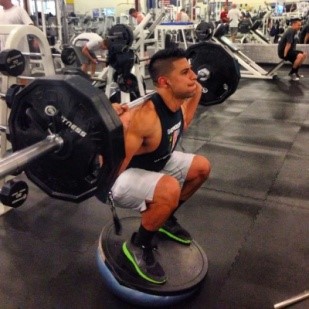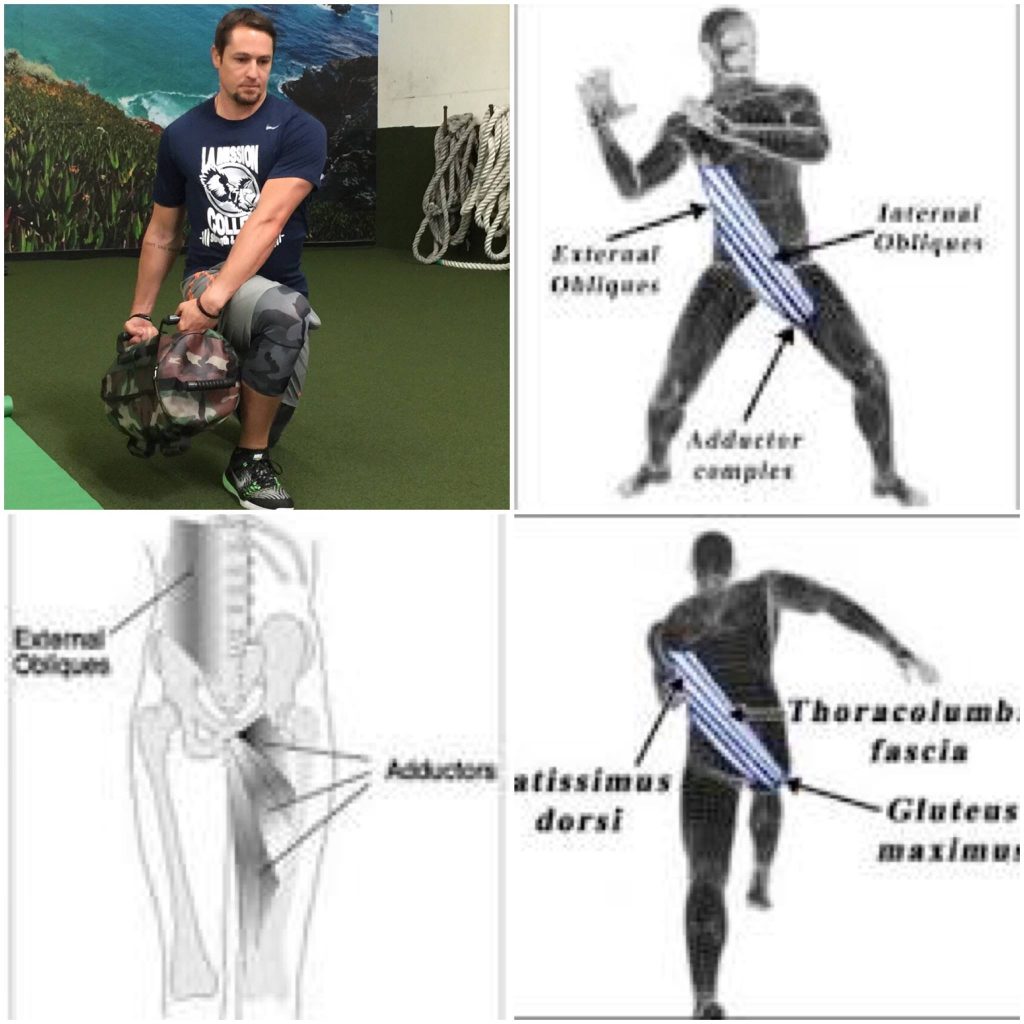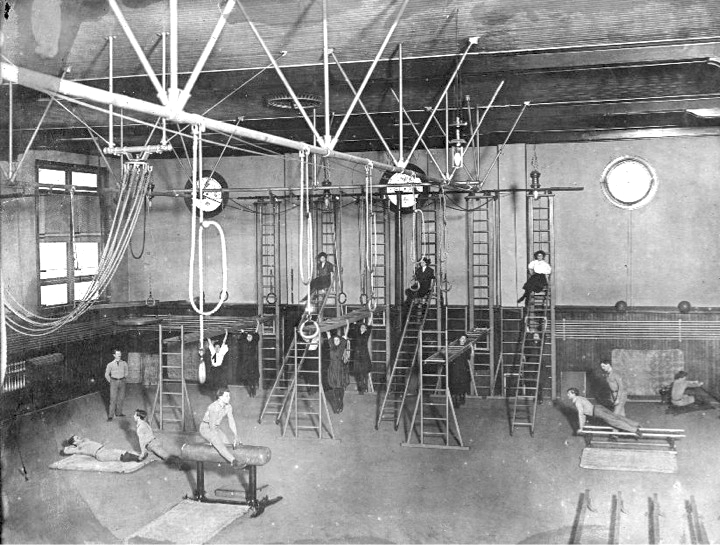3 Myths of Functional Training
2019-01-17
I feel like social media is always a go to place to find issues to discuss, even if you aren’t thinking about those topics. The other day I came across an article on a reputable website (no I’m not sharing because I don’t want people spamming it), talking about the benefits of functional training.
Like a lot of people I got brought into the article because of the image. The featured pic was someone doing a suspension exercise, an Ultimate Sandbag exercise, and a rope movement. I’m always intrigued when I see such imagines because I know that most people think that functional training has to do with the equipment.

People will laugh about this image, but most can’t tell you why it isn’t helping functional training.
So, I made the unfortunate mistake of reading the article to see what claims about functional training were being made and if the image had anything to do with what was being said. As much as I joke about saying I “unfortunately” read it, I actually do appreciate reading such articles because it helps me dispel many of the fallacies of functional training. Here were a few highlights….
Myth Statement: Functional training consists of exercises similar to getting up from bed in the morning, reaching for something, e.g. reaching for a mixer standing on the top shelf in the kitchen, lifting objects, jumping on the stairs – the most frequent movements we perform during the day.
Truth: Functional training has NOTHING to do with replicating what we do in life and sport. Instead, the goal of functional training is to train the body as it is designed to move. Wait, isn’t that basically the same thing?!
Yes and no. If I use functional training strategies I will be better at what I do in life, but that is because if I focus on training the specific patterns of the body, I will see crossover to many activities.
Okay, that sounds confusing, so what I mean? As you can see below our body works and creates movement in specific chains, not isolated muscles or random muscles working together.

What actually makes functional training a unique training system is trying to connect these chains through our use of exercise and specific movements. If the body learns how to do so, you see carryover to a wide array of activities.
The qualities that we are looking for in functional training?
-Connecting the kinetic chains of the body.
-Teaching people how to work from the ground up (meaning how the feet impact everything up the chain).
-Understanding we work in 3 planes of motion and having a system of progressing such a misunderstood variable.
-Learning to navigate gravity (our body is set-up to produce and resist force at the same time. Moving in life means learning how to deal with the ever present reality of gravity).
Myth: Functional training strengthens the whole body but does not cause visible muscle growth.
Truth: My mouth I believe LITERALLY dropped open when I read this statement. The author never explains why this would be the case, but I’ve heard people say something similar over the years.
Just because we are not isolating a muscle doesn’t mean muscles won’t hypertrophy. Sure, look at gymnasts, Olympic weightlifters, sprinters, and you will definitely see athletes that have impressive physiques without isolating their muscles in training.
Functional training should create what I call “honest physiques”. What do I mean? Before machines really grabbed a hold of bodybuilding in the 1950-60’s, many bodybuilders would train the body as a whole. Before the popularity of muscle growing and fat loss drugs, bodybuilders were much smaller and had physiques that most of us would appreciate today.

Training the body as it is designed to work and integrating MORE muscles because we place more demands on the body during a functional training exercise should actually result in GREAT results in both lean muscle gain and fat loss. Of course we are assuming you are doing it right;)
Myth: During functional training it is important to take care of the variety of movements. This is facilitated by additional equipment available in most fitness-clubs. These include: slam balls, medical balls, sling trainer, battle ropes, steel parallettes and others.
Truth: You might guess that I was just WAITING for this one! People often define functional training by the equipment they use, this is SO false. Yes, it even includes if you use Ultimate Sandbags!!!
Great tools allow us to use the concepts of functional training and put them into applicable workout programs. I’ll give you an example. One big reason that we favor Ultimate Sandbags, kettlebells, bands, and many of this commonly called “functional training” equipment over barbells is because of their ability to fulfill what we described earlier.
-Training all three planes of motion.
-Connecting the chains of the body.
-Teaching how to produce and resist force at the same time.
and so much more!
What makes our training functional is FIRST making sure we are meeting the 7 patterns of human movement.

Once we see that we are using these patterns then we want to ask ourselves questions such as….
-Do I want to use one leg/arm, two, split stances etc.?
-Which directions am I moving?
-Should I move fast or slow?
-How should I position the load on my body?
If you were to ask yourself just these questions about your workout you would be so far ahead of true functional training programs you wouldn’t believe!
It is true that functional training is suppose to help you live and perform your best, but WHY and HOW it does so are equally important. Most think novel exercises are the way we accomplish these goals, but thoughtful progression is far more effective in creating results from functional training that really get people to understand the powerful system it can be!

© 2025 Ultimate Sandbag Training. Site by Jennifer Web Design.







